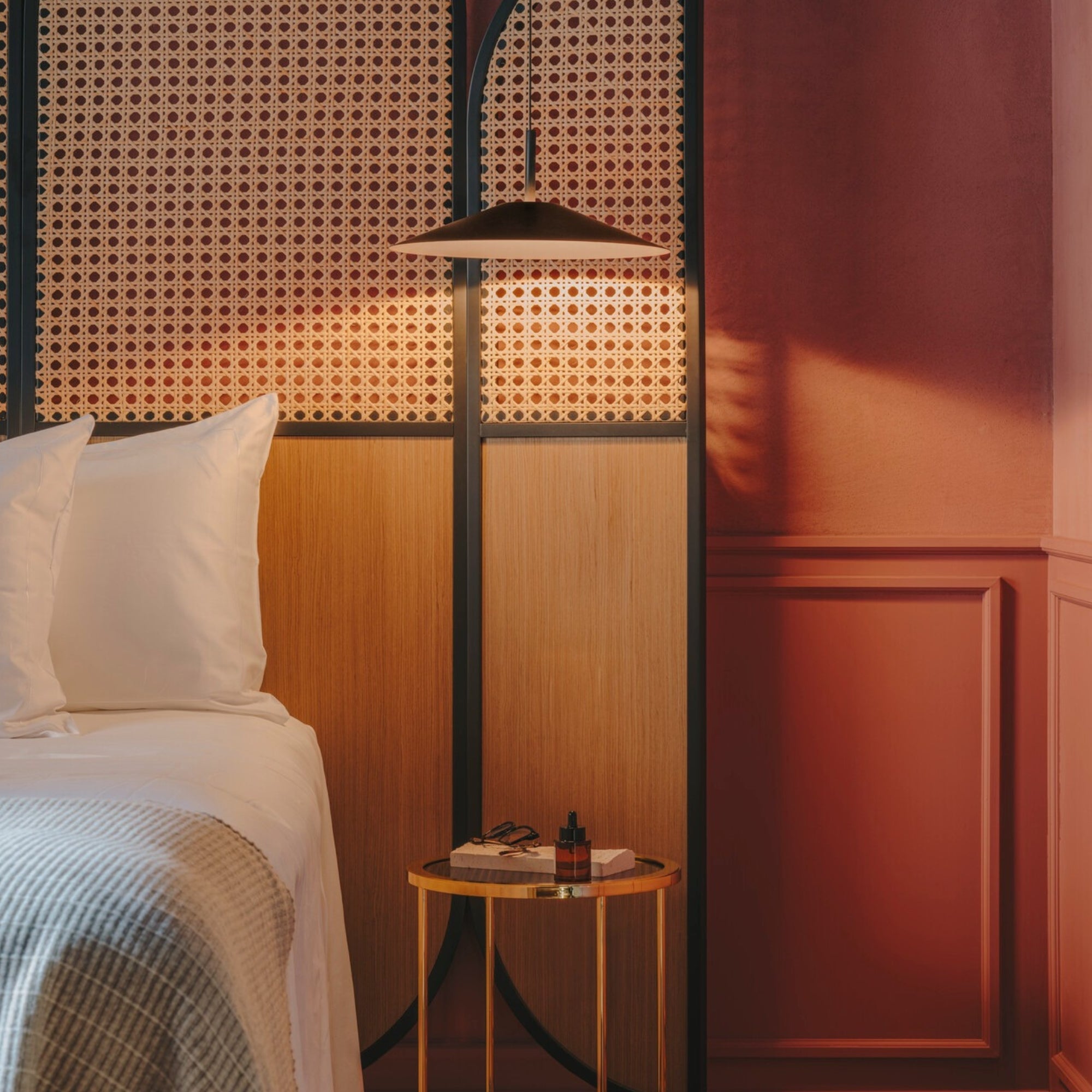Getting the right lighting temperature in your home is important as it can significantly alter a space’s aesthetic and mood. However, getting it wrong can also create a jarring or unhelpful effect. Discerning which light temperature to install can be tricky as the number of choices can often be overwhelming; this is where we can help!
At Moonlight Design, we have created a guide to help you understand cool white vs warm white light and which light colour temperatures are best for specific rooms.
Table of contents:
- What is colour temperature?
- Where to use warm and cool lighting
- Should you combine warm and cool lighting?
- Using warm and cool lighting in exterior spaces
What is colour temperature?
Colour temperature in lighting is measured in Kelvins (K) and describes how the colour of the light appears from its source. Kelvins operate on a scale; for example, 1,000K would look very red, and the higher you go up the scale, the light will resemble a more bluish hue (10,000K).
Despite what you might be thinking, the colour temperature does not correlate with the temperature of the lamp but rather the colour wavelength you are seeing.
Our guide below will help you to understand the difference between the lighting colour temperatures and where you should use them in your home.
Ultra-warm lighting
If you like the warm reddish glow of traditional filament bulbs but want more energy-efficient, longer-lasting options, choose an LED light bulb with a 1000K-1800K colour temperature. These bulbs will give you an ultra-warm light effect for a serene atmosphere, similar to candlelight
Very warm lighting
Very warm lighting sits around 2000K and 2500K, giving you the orangey glow of traditional incandescent bulbs for a vintage and peaceful ambience.
Warm white lighting
This is the most popular colour temperature to use in the living and relaxing areas of your home. Warm white lighting usually sits between 2,700K and 3000K, creating a warm, cosy, soft, and slightly yellowish glow.
Neutral lighting
4000K light is considered neutral white or cool white. It produces a light that is brighter and whiter than warm light but not as harsh or bluish as higher colour temperatures like 5000K or 6000K. It’s commonly used in offices, kitchens, workspaces, and garages, where a crisp, clear light is preferred for better focus and productivity.
Daylight white lighting
Anything between 5000K-6500K can be classed as daylight white; this is the purest form of white light, often resembling the light when the sun is at its highest, and it is the most accurate colour rendering light form.
Cool white lighting
If you’re wondering, What is Cool White Light? It sits between 6,500K and 10,000K, giving off an increasingly bluish hue. Ideal for areas where accurate colour rendering and bright illumination are needed. This lighting is common in photography, workspaces, hospitals, car parks or places where visibility and clarity are important.
Where to use warm and cool lighting
Now that you know how to identify the different types of colour-temperature lighting and the effect they create, it’s important to know where to use them in the home. Read on to find out which rooms you should use warm, cool and daylight lighting.
Where to use warm white lighting
Warm white lighting, typically 2700k – 3000k, is ideally suited for areas designed for relaxation, reading, and unwinding. Consider installing it in bedrooms, living rooms, and hallways to cultivate a cosy and inviting atmosphere. This type of lighting not only fosters a soothing ambience but also ensures that both you and your guests feel warmly welcomed upon entering your home.
Where to use neutral lighting
Neutral lighting, 4000k, is suitable for any space within your home. It effectively brightens the environment while rendering colours with remarkable accuracy. Whether utilised in bedrooms, kitchens, dining areas, living rooms, hallways, home offices, or staircases, daylight lighting not only serves as a gentle cue for your mind to awaken but also enhances productivity and provides optimal illumination for practical tasks.
Where to use cool white lighting
Cool lighting is best placed within your spaces where activities occur. Spaces within the home, such as kitchens and bathrooms, need functional lighting for performing tasks; cool white lighting can offer this. Cool white lighting also allows you to create a clean aesthetic, illuminate areas with bright light and help energise a room. It can also help to improve productivity.
Should you combine warm and cool lighting?
While you should never switch on warm and cool lighting simultaneously, as it can create a jarring effect, you may want to add multiple lighting temperatures to a room you use for multiple purposes.
For example, you may want warm white light in cosy lamps in your bedroom or living room when you’re winding down at the end of the day. Then, you might want the ability to switch to daylight or white light when you want to wake up and be productive at the start of the day. Installing both options in your bedroom, living room, or dining room gives you a more versatile space.
Using warm and cool lighting in exterior spaces
Deciding on lighting temperature isn’t exclusive to your indoor space; you can also experiment with outdoor lighting. For more guidance on How to choose the best outdoor lighting colour temperatures for your garden, read our dedicated guide.
Warm and cool white bulbs at Moonlight Design
Now that you understand what light colour temperature is, what effect it creates and how to identify different temperatures using the Kelvin scale, you should see the benefits of using warm white vs cool white lighting in and around your home.
Shop our extensive range of warm adn cool light bulbs at Moonlight Design for indoor and outdoor use to create the perfect lighting scheme in your home.
Related blogs:





Leave a comment
This site is protected by hCaptcha and the hCaptcha Privacy Policy and Terms of Service apply.